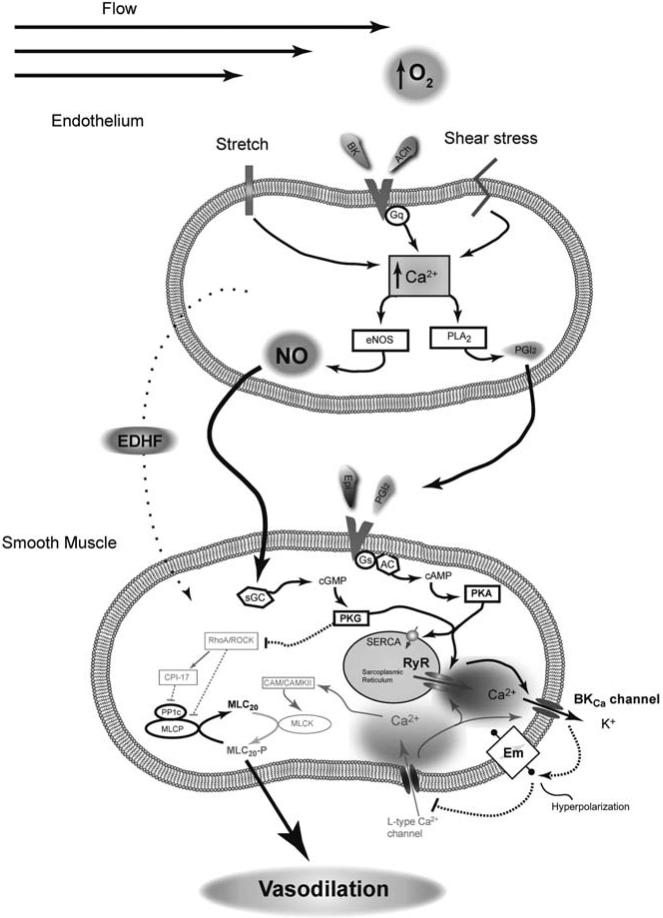Fig. (3). Pulmonary vasodilation at birth is orchestrated.
Mechanical forces due to breathing, combined with increases in vascular flow and blood oxygenation act to dilate vessels of the lung. Vasodilatory substances, shear stress and membrane stretch work together to increase prostacyclin (PGI2), nitric oxide (NO) production, and other pathways defined broadly as endothelial derived hyperpolarizing factors (EDHF) that have not been fully examined in the fetus. Signaling molecules released from the endothelium act in concert with epinephrine (Epi) and other neuro-humoral substances to increase Protein Kinase A and G activity (PKA and PKG). These kinases phosphorylate a wide array of different substrates to impinge on vascular contraction. As discussed, antenatal hypoxia depresses a number of these vasodilatory signals which leads to maintenance of vasoconstriction. Solid line with arrow: Activation pathway, Dashed line with bar: Inhibition pathway.

